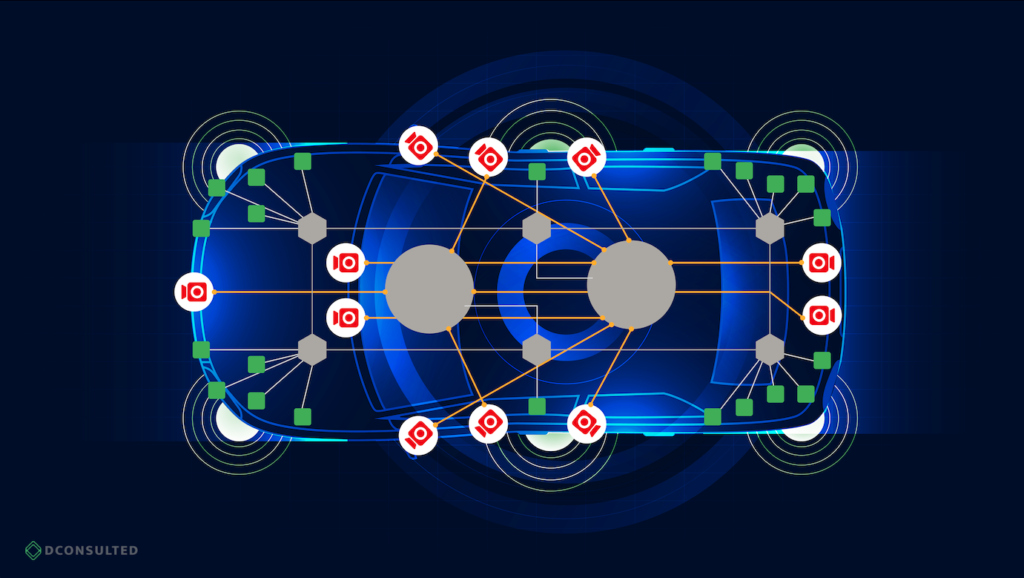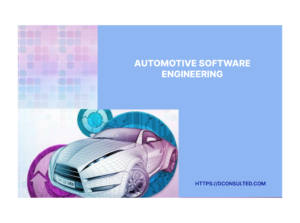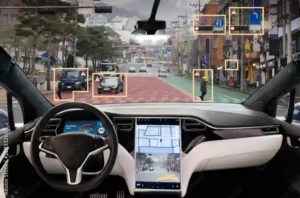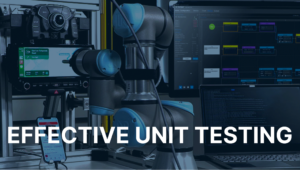
Empowering Your People Isn’t Enough | DConsulted
Learn why empowering employees alone doesn’t guarantee success. Discover how strategic alignment and leadership support drive real results.

Software-defined networking (SDN) is an innovative approach to network management and a fundamental shift in the design, deployment, and management of networks. The heart of this transformation is that SDN allows network administrators to control and manage the underlying network infrastructure through software applications.
Traditional network architectures often involve the use of proprietary hardware devices with embedded software to control network behavior. In contrast, SDN decouples the control plane (the intelligence that makes decisions about where traffic should be sent) from the data plane (the actual forwarding of network traffic). This separation empowers network administrators with dynamic and higher-level programming capabilities revolutionizing the network landscape in several domains, including automotive applications.

There are many reasons why SDN is becoming prominent in the automotive industry.
This article delves into the technical aspects of SDN and its business value to automotive computer system solutions. We will look into SDN specifically for its ability to drive efficiencies into automotive embedded systems through Multicast Addressing, a networking technique that enables the efficient distribution of data to multiple recipients, allowing devices to join or leave the group dynamically.
SDN enhances the value of Multicast Addressing by providing a flexible, scalable, and programmable networking infrastructure. The centralized control and active adaptability of SDN contribute to more efficient and reliable communication, making it well-suited for modern applications in the automotive industry that will increasingly rely on multicast communication.
There are five significant technical advantages to Multicast Addressing, each playing a pivotal role in optimizing automotive embedded systems for improved safety and performance. From efficiency to intelligence to scalability, these enhancements not only result in cost reductions but also generate substantial business value.
In standard unicast setups, every destination requires a distinct packet, which results in excessive bandwidth consumption. Multicast Addressing, on the other hand, allows for the transmission of a single data packet to numerous destinations simultaneously. The implication is significant bandwidth conservation, particularly critical when delivering large data streams such as high-resolution video or dense LIDAR point clouds.
Lower Processing Overhead – It’s not sufficient to merely send bits along a wire for data to be transmitted. Instead, the sending and receiving ends of the connection must each perform several computing operations. With multicast communication, there are fewer packets on the network requiring less computing overhead. With this efficiency, the onboard processors can devote more resources to other duties including analyzing data and making decisions.
Scalability for Complicated Systems – A significant number of sensors, controllers, and processors are found in modern vehicles, particularly in those equipped with advanced driver-assistance systems (ADAS) or autonomous driving capabilities. These advanced systems demand meticulous attention to software and system architecture design, adhering to standards such as ASPICE and ISO26262. As vehicles become smarter and more self-driving, the complexity of their internal communication tools increases.
Energy Efficiency in Electric Vehicles – With electric vehicles (EVs), every last bit of energy counts. The process of sending data across a network takes up energy, and considering the vast amount of data that may be stored in EV systems, the energy footprint that communication can leave behind can be significant. The capability of multicast to reduce the number of packets directly translates to reduced energy requirements, which benefits an electric vehicle’s total range and battery life.
Simplified Network Configuration and Maintenance – When there are fewer data streams, the routing logic may be simplified, and there can be fewer connections made. This not only makes the initial setup easier but also simplifies continuing maintenance. This streamlined design results in measurable cost reduction as well as reduced system downtime.
Improved Real-Time Performance – Delay is not an option for vehicles that are capable of driving themselves. The ability to make decisions quickly and accurately while depending largely on data processing in real time is essential. Multicast guarantees that the vital data reaches its destination in the quickest possible time by lowering the amount of duplicated data and optimizing network usage.
Hardware Cost Reduction – With Multicast Addressing, you can get the same or a higher level of performance with hardware that is either less powerful or less specialized without negatively impacting the embedded system’s overall performance or efficiency. Direct savings on hardware costs are possible when there are fewer wires, switches, and integrated modules.
Multicast Addressing changes how data are sent in the automobile world. This streaming technique dramatically improves network efficiency, saves bandwidth, and makes contact easier in many automotive situations by letting a single data packet be sent to multiple destinations simultaneously instead of unicasting separately.
Sensor Data Dissemination – Advanced driver-assistance systems (ADAS) and autonomous driving systems rely on various sensors. When multiple systems or ECUs need access to the same sensor data such as cameras, radar, and LIDAR, multicast communication targets a single sensor to send data only once. Then, any ECUs or devices that want to receive the information can do so without waiting to receive multiple dispatches. This simplified method keeps the network from backing up when all sensors are engaged and ensures that data flows smoothly to the ECU.
Streaming Camera/Video Applications – Multicast is widely used in applications that include the streaming of video. Content such as songs or videos may necessitate simultaneous streaming to multiple speakers or video screens. With Multicast Addressing, media only need to be sent once to be received and played on multiple devices. This streamlined approach ensures a seamless in-car entertainment experience while optimizing bandwidth utilization.
Diagnostics and Telemetry – During vehicle diagnostics or routine maintenance, multiple systems may need to report status or telemetry data to diagnostic tools or central monitoring systems. Multicast efficiently broadcasts diagnostics to any tool or system interested in the data, reducing the transmitted data volume and enhancing overall efficiency in maintenance and analyses.
Vehicle-to-Everything (V2X) Communications – As vehicles become more electronically connected, there may be circumstances in which a single vehicle needs to send information to nearby vehicles at the same time, such as warnings about rapid stops or obstacles. Multicast Addressing makes the process easier by requiring the vehicle to send the warning message only once and all vehicles tuned to that multicast address receive it simultaneously, making the best use of bandwidth in cases where safety is paramount.
Over-the-Air (OTA) upgrades – As electric vehicles increasingly rely on their software, OTA upgrades will become increasingly important and the periodic need for software or firmware updates will become a common occurrence. Multicast communication simplifies this process by efficiently disseminating updates to multiple ECUs or devices in the vehicle simultaneously, saving time and resources.
While the energy consumed by a vehicle’s network communication systems might be less compared to propulsion or HVAC, every joule counts in EVs. Through Multicast Addressing, the reduction in the number of packets that are transmitted results in lower overall energy consumption. Listed below are the reasons why energy efficiency in network communication is vital for electric vehicles:
Extended Range – Efficient network communication minimizes energy drain. This is significant as electric vehicles constantly grapple with maximizing energy consumption. Inefficient communication protocols can unnecessarily drain the battery ultimately limiting the distance the EV can travel on a single charge. By multicasting communication, EVs can prioritize their energy reserves for propulsion, extending the vehicle’s driving range.
Battery Longevity – Inefficient network connectivity results in constant data transmission, putting unnecessary strain on an EV battery, which in turn leads to more frequent charging cycles. Multicast Addressing makes it possible to have greater control over the degree to which the battery is charged. This assists in preventing severe charge and discharge cycles, both of which detract from the battery’s endurance. The result is an EV battery that can hold its charge capacity for a more extended time and has a longer life span overall.
Thermal Management – The amount of heat created by network components can be reduced by reducing the number of transmissions. If there is less heat, then there will be less of a need for cooling equipment, which will save even more energy. While the energy savings from efficient network communication in isolation might appear minor, the cumulative benefits, especially in the broader context of an EV’s operation, can be significant.
Scalability plays a pivotal role in the dynamic landscape of self-driving vehicles where technological advancements and system complexities are continually evolving. Multicast Addressing emerges as a crucial component in addressing this challenge, offering a streamlined way to distribute advancements efficiently across the network.
Navigating Sensor Proliferation – The sensor count continues to surge in the advancing world of vehicles. Multiple cameras, radar, LIDAR, and ultrasonic sensors, collectively generate abundant data. Multicast communication enables data from a sensor to reach multiple vehicles without incurring a linear network traffic increase.
Dynamic Consumers in a Modular World – In the highly modular and upgradable realm of advanced automotive architectures, new ECUs and modules constantly join the ensemble as functionalities evolve. Multicast communication serves as the gateway for these new functions, enabling seamless integration. New ECUs tune in to relevant multicast addresses, avoiding disrupting existing data flows and the need for exhaustive configuration changes.
Decoupling Producers and Consumers – Multicast brings with it a decoupled architectural paradigm, freeing data producers from the burden of knowing every individual vehicle. This simplifies system design enhancing flexibility and scalability. Adding or removing vehicles is easier, demanding no configuration changes in data producers.
Reliability in Redundancy – For high-availability systems, redundancy is critical. Multicast ensures data reaches both primary and backup units in tandem. In the event of a primary unit failure, the backup seamlessly takes the reins, guaranteeing reliability.
Advanced Use Cases and OTA Updates – In advanced use cases such as cooperative driving, platooning, and V2X communication where data sharing among multiple vehicles becomes the norm, multicast communication simplifies and enhances scalability, stretching beyond the confines of a single vehicle. Moreover, as vehicles become increasingly connected, multicast becomes a catalyst for efficient broadcasting of over-the-air updates to multiple vehicles or multiple ECUs within a single vehicle.
Multicast Addressing reduces hardware costs by efficiently delivering data to a specific group of devices, eliminating the need for individual point-to-point connections. This targeted approach minimizes network traffic and conserves resources, resulting in cost savings related to both equipment and bandwidth usage.
Streamlined Network Components – Redundant data transmission stresses network components, potentially requiring high-specification switches, routers, or gateways to manage the influx of data packets. By reducing the number of redundant transmissions, the same data processing and transmission jobs can be carried out using networking components that are less powerful and, as a result, more cost-effective.
Scalable Hardware Requirements – The increased effectiveness of multicast eliminates or significantly reduces the need for linear hardware upgrades with each additional node or functionality added to a system as it scales to accommodate more components. The network can incorporate additional nodes without experiencing a proportionally increased cost increase.
Reduced Cable Usage – At the vehicle level, reducing the amount of cabling results in significant cost and weight savings. Because of the efficient use of bandwidth that multicast provides, there is less of a requirement for vast parallel data linkages or redundant connections, which ultimately results in a reduced reliance on cables and the costs associated with them.
Less Specialized Components – As a result of multicast’s increased efficiency, specific applications may no longer require high-end hardware components, which are typically more expensive. Mid-range switches will suffice as opposed to premium switches with advanced buffering and Quality of Service (QoS) capabilities.
Heat and Power Loss – The decrease in the amount of data processed and transmitted causes a corresponding reduction in the amount of power consumed, which in turn results in less heat being dissipated. This means that less dependence will need to be placed on robust and expensive heat control technologies within embedded electronics.
Possibility of Implementing Integrated Solutions – By making use of the reduced requirements for data processing and transmission that are made possible by multicasting, opportunities for integrated and cost-effective hardware solutions can be created. For instance, a consolidated sensor-controller unit could supersede the requirement for two distinct components, resulting in an additional reduction in expenses.
Extended Software and Operating System Support – The low resource consumption that multicast places on network components helps extend their useful lives. Because of this, parts will need to be replaced at a reduced frequency, resulting in significant cost savings over the vehicle’s lifetime.
Future-Proofing Your Design With Modular Architecture – The design of hardware can become more modular. When new features or nodes are added to a network, integrating them can become a streamlined and cost-effective process, strengthening the network’s ability to withstand disruptions in the future.
The five key technical advantages of Multicast Addressing: reduced bandwidth, efficient data distribution, energy efficiencies for EVs, scalability, and reduced hardware costs each play an important role in optimizing automotive embedded systems for improved safety and performance. However, The effectiveness of Multicast Addressing requires thoughtful planning and structuring of the network architecture to ensure it is tailored to handle multicast communication efficiently.
A big part of how well and safely Multicast Addressing works is the use of system design and setup encompasses the deliberate and meticulous planning and structuring of the network architecture. This involves tailoring the network in a way that optimally supports the specific requirements and challenges associated with multicast communication. Listed below are the different ways that can be used to reach this goal for small systems to complex automotive networks:
Fixed Configuration in the Boot Firmware – For smaller, more stable systems, fixed configurations in the boot firmware offer a good balance of security and reliability as long as multicast groups don’t change. Fixed configurations establish a predetermined and unchanging set of parameters during the boot process. A fixed configuration in the boot firmware also contributes to system reliability. This predictability ensures that the system consistently boots with known settings, minimizing the risk of configuration errors or unexpected behavior during startup.
Controlled by a Switch Driver With Register Access – For moderately dynamic systems, the switch driver with register access is a good choice for systems that need to be reconfigured every so often. The system can be rearranged to meet new needs. Integrating with Multicast Addressing is smooth and works well with other parts or functions of the system. However, this method is more complicated and needs complex software control. There are also security issues since accessing the register could leave holes if not adequately protected.
Managed Switch With a Client Connection – For complex automotive systems, a managed switch method works well for highly dynamic automotive systems with networking needs that are constantly changing. This allows a lot of freedom and can be reconfigured on the fly to meet the needs of a changing network. It can also be expanded and works with large or complicated network designs.
Use of Protocols Such as IGMP – For diverse device networks, protocols like IGMP provide flexibility in networks with variable devices, such as in-vehicle entertainment systems. Using a well-known and widely-used protocol, this method brings uniformity into the picture. It also allows dynamic membership, which makes it easier for people to join and leave multicast groups.
As the automotive industry advances toward autonomous data-intensive vehicles, the effective utilization of Multicast Addressing not only addresses the current challenges facing the industry but also lays a foundation for efficient, high-performing, scalable, and cost-effective communication systems crucial for the future of smart and automated transportation.
To that end, the integration of Multicast Addressing not only streamlines communication among various components within a vehicle but also enables seamless interaction between vehicles and the broader transportation infrastructure. This will not only improve safety but also opens the door to yet unforeseen applications and services, transforming the driving experience.
Other Articles

Learn why empowering employees alone doesn’t guarantee success. Discover how strategic alignment and leadership support drive real results.

Generative AI tools like ChatGPT are revolutionizing software engineering by converting UML diagrams into accurate, structured code. Learn more about it here.

AI-powered requirement review tools simplify engineering verification, ensuring accuracy, efficiency, and compliance with INCOSE guidelines. Learn more about it here.

Managing and optimizing thread overhead is important for safety-critical and embedded systems. Learn more about the C++ multithread common myths here.

Managing and optimizing thread overhead is important for safety-critical and embedded systems. Learn more about the C++ multithread common myths here.

Discover the critical role of effective interface management in complex systems. Learn how centralized tools, AI-powered solutions, and well-defined processes can prevent errors, enhance collaboration, and ensure safety in industries like automotive and aerospace.

The system requirements analysis process under ASPICE and ISO26262 frameworks shapes automotive system architecture design for enhanced safety, reliability, and compliance. Learn more about it here.

Compliance with ASPICE and ISO26262 standards provides a significant impact on automotive software development. Learn more about it here.

AI technologies like ChatGPT-4 are revolutionizing requirements engineering by improving accuracy, consistency, and efficiency. Learn about the role of AI in refining, validating, and managing project requirements here.

Model-Based Systems Engineering (MBSE) offers a robust framework to streamline the entire engineering process, from design to validation. Learn more about it here.

Data-Oriented Design (DOD) can revolutionize automotive software development by enhancing performance, reducing costs, and minimizing hardware requirements. Learn more about it here.

Explore the evolution of functional safety, its growing importance in industries like automotive, and the critical role of Fault Tolerant Time Interval (FTTI) in ensuring system reliability. Learn how FTTI, along with Malfunctioning Behavior Manifestation Time (MBMT) and Hazard Manifestation Time (HMT), contributes to robust safety designs, preventing hazards in safety-related systems such as ADAS and autonomous vehicles. Discover the impact of ISO 26262 standards on the development of effective fault detection and reaction mechanisms in automotive safety.

While ISO 26262 primarily addresses functional safety, SOTIF extends the scope to focus on potential hazards arising from system behaviour, even when the system functions as intended. Learn more about it here.

Discover the risks of reinterpret_cast in safety-critical software and explore safe alternatives like polymorphism and templates for robust, efficient code.

In a rapidly evolving technological landscape, the demand for systems that can not only withstand errors but also adapt to them is paramount. This article delves into the world of Fault-Tolerant (FT) systems, emphasizing their significance in maintaining the functionality and safety of critical operations across various sectors. It explores the latest advancements in FT technology, underscoring the importance of resilience and adaptability in ensuring uninterrupted service and safeguarding against potential failures.

In a rapidly evolving technological landscape, the demand for systems that can not only withstand errors but also adapt to them is paramount. This article delves into the world of Fault-Tolerant (FT) systems, emphasizing their significance in maintaining the functionality and safety of critical operations across various sectors. It explores the latest advancements in FT technology, underscoring the importance of resilience and adaptability in ensuring uninterrupted service and safeguarding against potential failures.

Discover how ChatGPT revolutionizes engineering with AI, accelerating learning, enhancing safety, and boosting productivity.

Defect Escape Reduction Rate and feedback loop elevate testing. Learn more about them here.

ASPICE and ISO26262 frameworks improve system development in the automotive industry, ensuring safety, compliance, and high-quality standards.

Conducting software FMEA, FTA, and compliance with ISO 26262 helps developers create software that meets stringent safety requirements. Learn more about it here.

Explore the challenges of dynamic memory allocation in critical software, learn how to mitigate failures, and ensure the reliability of safety-critical systems. Real-life failures and practical solutions are discussed.

Strong types are a key concept in C++ programming for functional safety. Learn how strong types can reduce errors in critical systems with C++.

Unit testing is an essential part of the software development process. Learn more about it here.

Learn about categorizing requirements, including functional, non-functional, performance, interface etc for effective system management and development.
